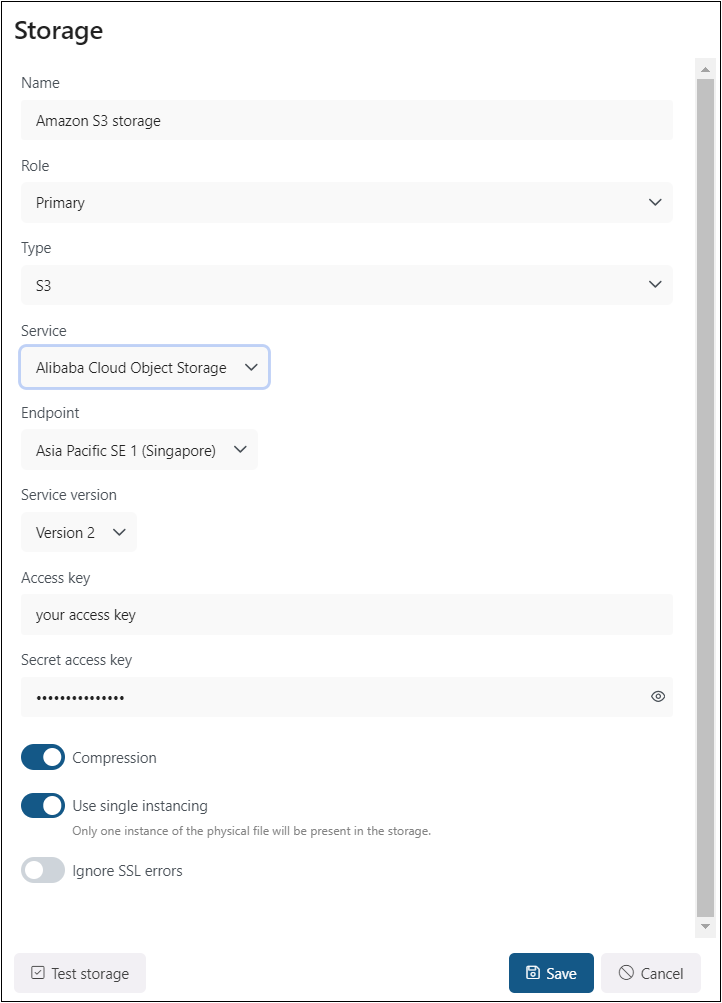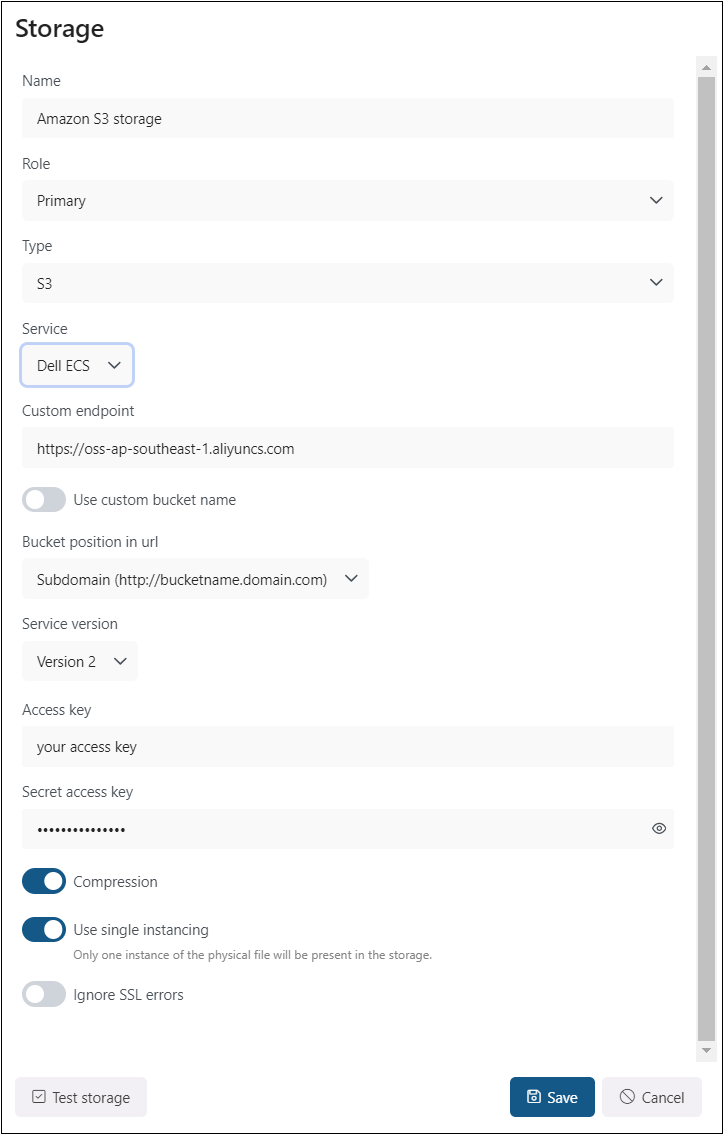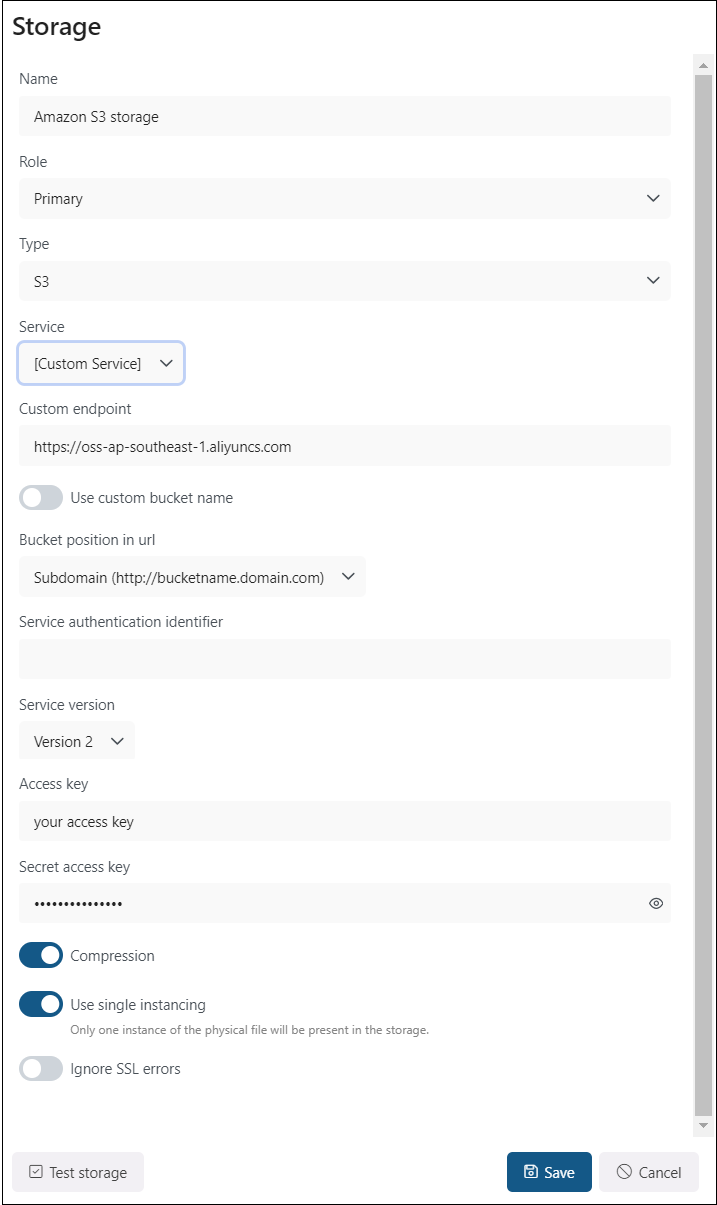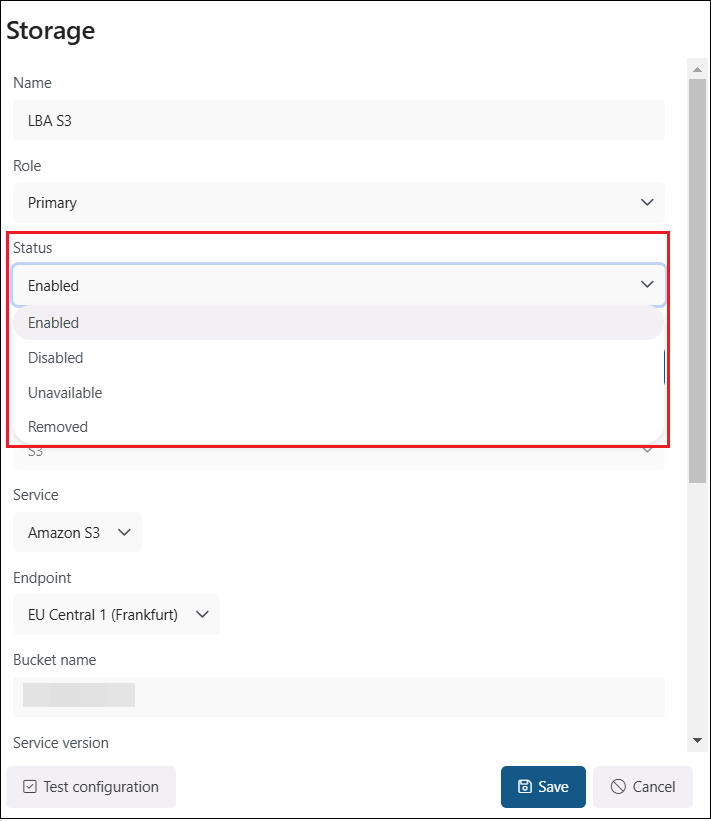Amazon S3 storage
Amazon S3 (Simple Storage Service) is a cloud-based storage solution by Amazon Web Services (AWS) that allows you to store and retrieve any amount of data from anywhere on the web. It is highly scalable, durable, and cost-effective, making it ideal for a variety of use cases like backups, archiving, content delivery, and data analytics.
S3 organizes data into buckets, which act like folders, and stores individual files as objects identified by unique keys. It supports flexible storage classes for different needs, from frequently accessed data (S3 Standard) to long-term backup (S3 Glacier). S3 is also highly secure, offering encryption, access controls, and integration with other AWS services.
Key features include its pay-as-you-go pricing, and ease of integration with tools and services. It’s used for tasks like hosting static websites, streaming media, and providing storage for applications. Whether you need high-speed access or affordable backup storage, Amazon S3 adapts to your needs, ensuring reliable and secure data management.
How to configure the Amazon S3 Storage
First, you set the storage Name, the Type (Amazon S3), the Role (Primary), and the Priority. The Primary role means, that the storage acts as the main repository for the selected workflow or task (e.g., email backup or document management). It is prioritized for data storage and retrieval. If multiple storages are defined, the one marked as “Primary” will take precedence over others (e.g., for storing live or frequently accessed data).
Once the storage type (Amazon S3) is selected and the Role and Status are set, you can choose Amazon S3 from the service dropdown menu.
The store connects to the endpoint that you select for a specific service. In Backup Administration for Microsoft 365, the service endpoint can be Wasabi, Amazon Simple Storage Service (Amazon S3), and Alibaba Cloud Object Storage, which also uses Amazon S3 interface. If you want to use a different cloud service, which supports Amazon S3 interface, it is possible to select [Custom Service] URL for the service and then enter a custom URL for that service endpoint. In Backup Administration, the service endpoints are preconfigured.
The version specifies which communication version to use for the service endpoint (the service version is specified by the endpoint service). All services support Service Version 2 or 4.
The access key and secret access key are used to authenticate the caller with the cloud service. These keys are provided by the cloud storage service.
This storage type also supports compression and single instancing, which can save you a lot of space.




After creating the storage, opening it for the first time or selecting the Edit option from the context menu will display an additional feature in the Storage Repository window: the Status option, which can be:
- Enabled: The storage is active and ready for use in the system. It can accept new data, perform retrieval operations, and serve as part of workflows like archiving, backup, or file storage.
- Disabled: The storage is temporarily turned off and will not be used by Backup Administration. It remains in the system but cannot accept new data or participate in workflows until re-enabled. The backup will still function if there is an allowed writable replica storage. In this case, documents will be stored in the replica storage, and when the storage is re-enabled, the Storage Replication Job will duplicate the files to the primary storage.
- Unavailable: You no longer wish to use the storage. In this case, it will not be able to receive anything. No operations can be performed with this storage until the issue is resolved and its status returns to Enabled.
- Removed: The storage has been deleted or disconnected from the system. It is no longer available for any operations or workflows.
